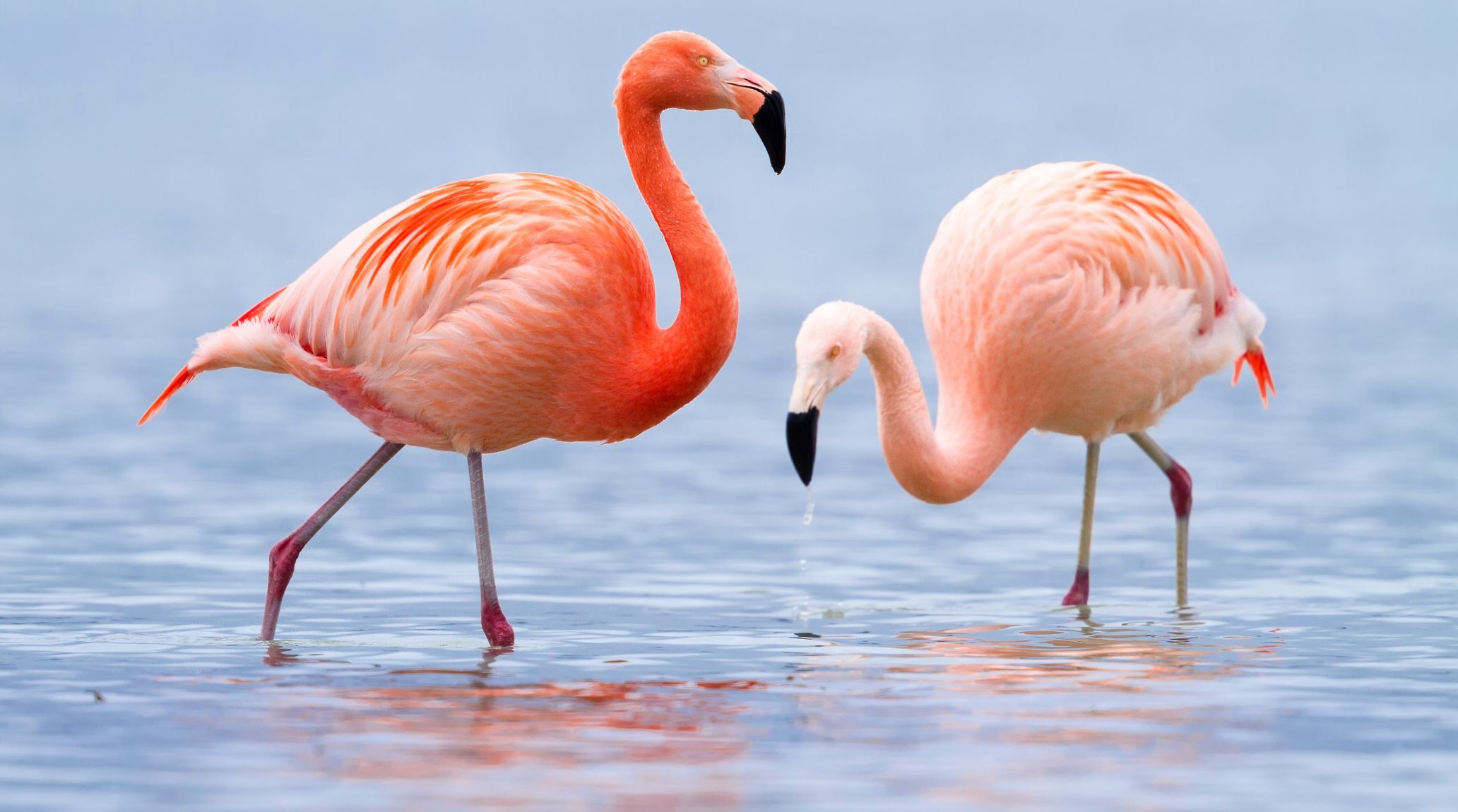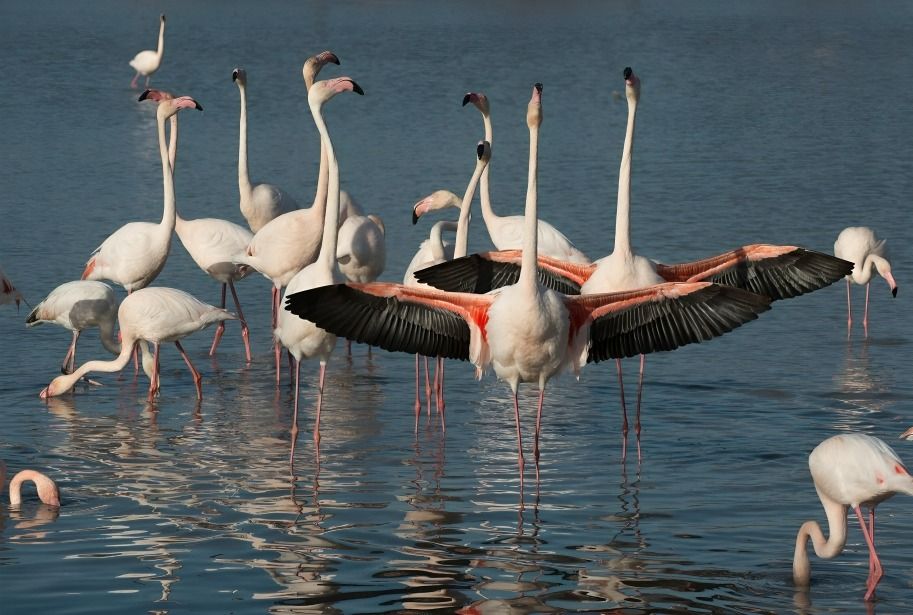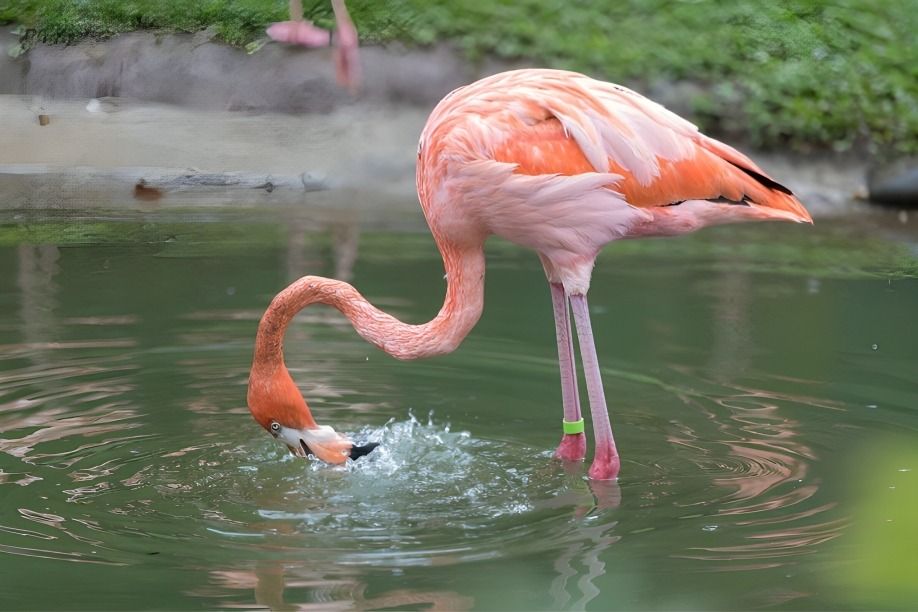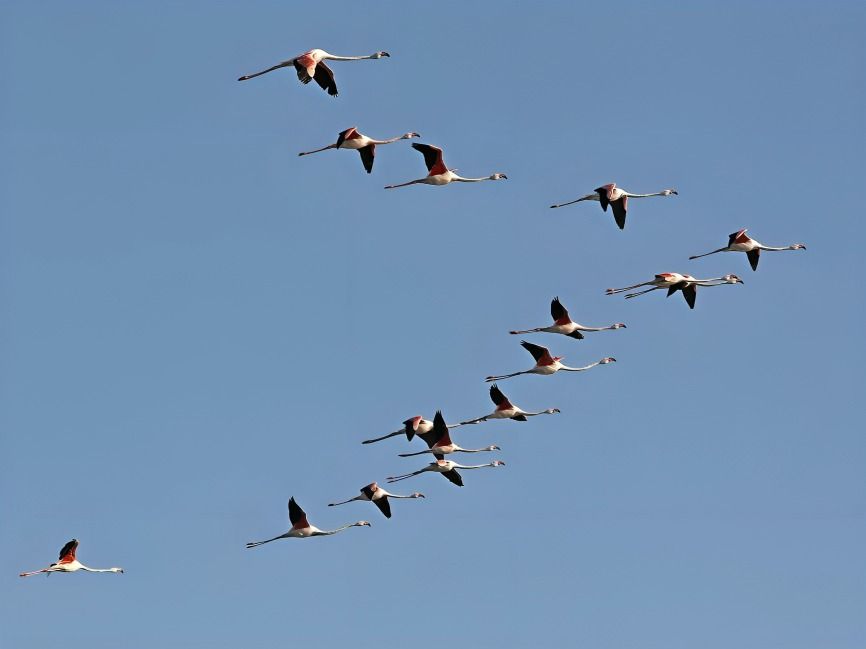
“
Flamingos are one of the most fascinating birds on our planet. With their vibrant pink feathers and graceful movements, they capture the imagination of children and adults alike. Let's dive into 20 unique flamingo facts about these amazing birds that you might not know!1
1
1
”
Flamingos are naturally grey or white but turn pink because of their food! Their diet mainly consists of algae, shrimp, and other tiny creatures rich in carotenoids, the same pigments that give carrots and orange colour. 1

Flamingos perform an elegant dance as part of their courtship ritual. These synchronised group dances help flamingos attract mates. They stretch their necks, flap their wings, and march in unison, creating a spectacular sight!
The longest line of garden flamingos ever created stretched an incredible 4,280 flamingos, set by the Buffalo Olmstead Parks Conservancy in Buffalo, New York, on June 21, 2022. This vibrant display set a new record and showcased the charm of these iconic pink birds. 2
Flamingo chicks are born with white or grey down feathers. They only start developing their pink colouration after a few years as they consume more carotenoid-rich food. This gradual change helps them blend in with their parents as they grow. 3
Soda lakes in East Africa are home to up to 2.5 million lesser flamingos, which make up 75% of their global population. In January 1995, over 2.75 million lesser flamingos flocked to just six lakes in Tanzania during the breeding season, making it the world's largest flamingo gathering. 4
One of the most iconic flamingo behaviours is their habit of standing on one leg. Scientists believe this posture helps them conserve body heat while they rest or sleep, as it reduces the amount of body surface exposed to the cool air.5
Just like mammals, flamingos produce a special "milk" to feed their chicks. This nutrient-rich secretion, known as crop milk, is produced by both parents and is essential for the growth and development of their young ones. 6

Flamingos have a unique way of eating. They turn their heads upside down to filter feed, using their beaks to separate mud and silt from the food they consume. This special feeding technique makes them expert feeders in shallow waters.
Flamingos have a surprisingly long lifespan for birds, often living up to 30 years in the wild. In captivity, where they are protected from predators and have a steady food supply, they can live even longer, sometimes reaching 50 years! 7
Flamingos are highly social and live in large colonies, sometimes numbering in the thousands. These colonies provide safety in numbers, help with breeding, and make it easier for flamingos to find food through collective effort. 8
While most people are familiar with pink flamingos, there are also other colour varieties. Some flamingos can appear orange, red, or even yellow, depending on the specific carotenoids in their diet. These colour differences make each flamingo colony unique. 9
Flamingos do not have a pregnancy period since they lay eggs like other birds. After mating, a female flamingo typically lays one egg, which is then incubated by both parents for about 27 to 31 days until it hatches. 10
Some species of flamingos, like the Andean flamingo, live at high altitudes in South America. These flamingos are adapted to harsh environments, including salt lakes that are often inhospitable to other forms of life. 11

Despite their long legs and large bodies, flamingos are strong fliers. They often travel in V-formation during migration, similar to geese, which helps them conserve energy over long distances. Their flight can be a breathtaking spectacle!
Flamingos build their nests from mud in the shape of a mound. These mounds keep their eggs safe and dry above the water level. Both parents take turns incubating the single egg laid by the female, ensuring it stays warm and protected. 12
Some flamingo species are migratory, travelling long distances between breeding and feeding grounds. These migrations ensure they have access to abundant food supplies and suitable nesting sites throughout the year. 13
Flamingos are often found in salty lakes and lagoons. They have special glands near their eyes that excrete excess salt from their bodies, allowing them to thrive in environments where few other animals can survive. 14
Flamingos communicate with a range of vocalisations, from honking to grunting. These sounds help them maintain group cohesion, especially in large colonies and are essential during the breeding season to strengthen pair bonds. 15
The Caribbean flamingo (Phoenicopterus ruber), the national bird of the Bahamas, is celebrated for its vibrant pink color and graceful presence. This striking bird symbolizes the beauty and elegance of the region’s natural wildlife. 16
Flamingos are filter feeders, meaning they use their beaks to sift through water and mud to find food. Tiny hair-like structures called lamellae inside their beaks trap small organisms, making them efficient at finding food in their aquatic habitats. 17


